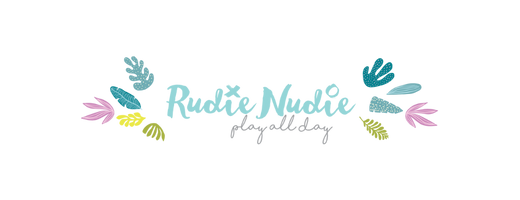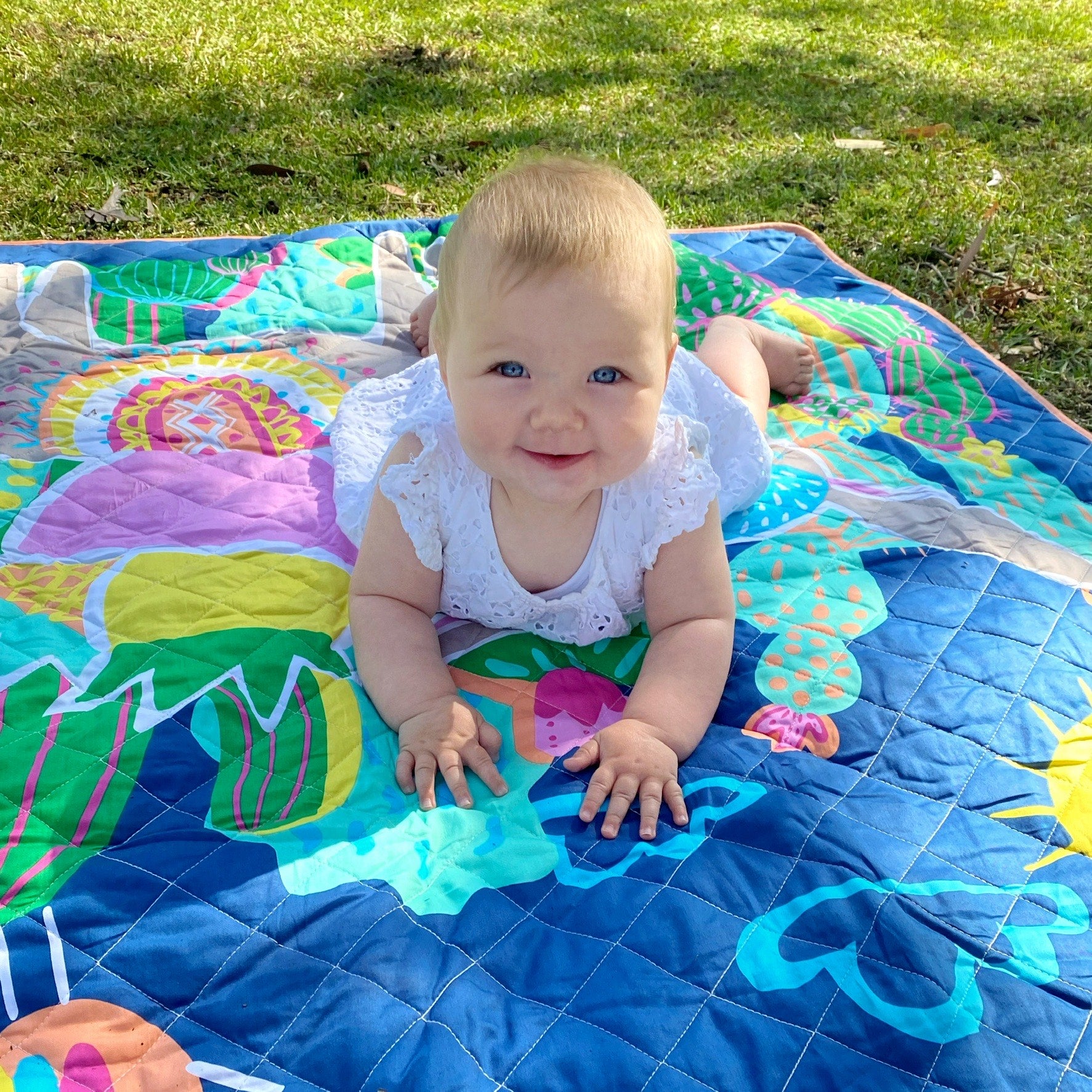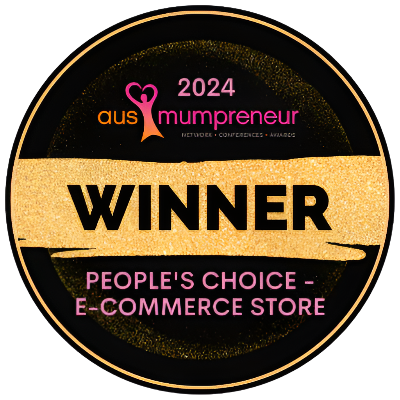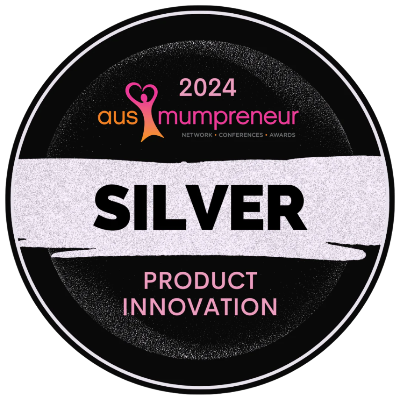Tummy time... What is it? Why is it so important and how do we know if we're doing it right? Paediatric Physiotherapist Nicole Pates shares her top tummy time tips.
Ahhh tummy time—it’s something you hear and talk about a LOT as a new parent. It literally means baby is awake and on their tummy. This concept came into play in the early nineties after the very successful Back to Sleep SIDS campaign that saved countless lives. Health professionals started to notice an increase in head flattening (plagiocephaly) and a later shift in motor development, as bubs started to spend their awake and asleep time on their back. Hence “tummy time” was introduced as a way to increase the variety in bubs’ awake positions and prevent plagiocephaly/motor delay.
Tummy time is great for bub to develop their strength, vision, postural control and body awareness and lays the foundations for motor skills such as crawling.
Some bubs are tummy time naturals and love being in this position, but it isn’t always and some bubs get quite frustrated and upset when on their tums.
Let me share a few little secrets to help make tummy time easier.
Baby Watch
Often we get told to do X minutes of tummy time with our bub… but I like to individualise it, as all bubs are different! So how do you know what is right for your bubba? Don’t watch the clock, watch your bubba! Look for their cues of tiredness, frustration, or distress—jerky movements, clenched fists, hiccups, staring into the distance, yawning, avoiding eye contact and turning away from you. When you see these cues, give bub a break. Some days and times they might last longer than others. Look for their play cues; eye contact, smooth movements, smiles and wanting to interact. Picking a time where bub is read to play will lead to more tummy time success.
Connection is Key
Tummy time is hard work, so make it fun! Get down to bub’s level and chat, smile, sing, make eye contact! If getting down is hard for you, pop bub on their tummy on the change table after a nappy change, on the change mat on the table or even on your bed (always under supervision). Using your voice and face or toys such as a mirror or contrast cards give bub a fun reason to be on their tummy. Remember—bub can’t yet reach from their tummy or move so something to look at or chat to, makes it way more fun.
Integrate
Some bubs are just not keen on being on their tummy and playing. Integrating it into your daily routine and doing lots of micro-sessions of tummy time can be super helpful in this case.
Easy ways to integrate tummy time into your daily routine include:
- Rolling bub onto their tummy after nappy changes for a chat;
- Carrying them over your arm tummy down;
- Using the baby carrier (yes, this counts);
- Hopping them onto their tummy over your lap; or
- On their tummy on the change mat on the table whilst you eat dinner (this is super helpful for early mealtimes).
Mix it Up
We all have a play area set up at home… remember that bubs are little people, they can get bored! Mixing up the environment; different rooms, outside or inside and using different toys can make tummy time more enjoyable. Getting outdoors on a Rudie Nudie playmat is super for bubs’ physical development and bubs love to watch other little people play.
Nudie Time is the Best Time
When all else fails, nudie tummy time in a warm and safe place is usually a winner. Bubs love to be nudie. Whether its skin to skin with you (HELLLOOOO ALL THE SKIN TO SKIN BENEFITS OF BRAIN DEVELOPMENT AND REGULATION!!) or in a safe warm place, nudie tummy time is a fabulous sensory experience and they are able to freely explore the way their body moves. The only con is that the usually wee all over the place. Luckily the Rudie Nudie waterproof washable playmat was designed for this and makes clean up from nudie tummy time a breeze 😉
Hopefully these tips help you and your bubba enjoy tummy time and reap the developmental benefits.
If it's still tricky and you are stressed—don’t worry! I’ve got you. Pop on over to my Instagram @nicole_kidsphysio for lots of little tips or join the Baby Play Academy for over 200 play ideas and motor development support for your little one from birth to walking. You can also always check in with your local paediatric physio for 1:1 support—reassurance is key to peace of mind!
This blog was written for Rudie Nudie by Nicole Pates, APA Titled Paediatric Physiotherapist with Western Kids Health. Nicole's Instagram is @nicole_kidsphysio







